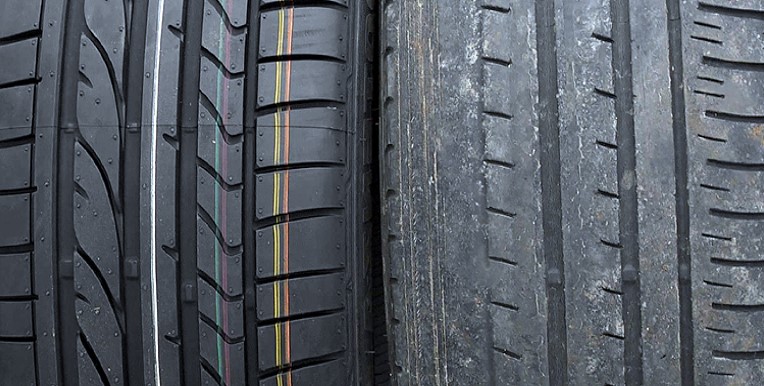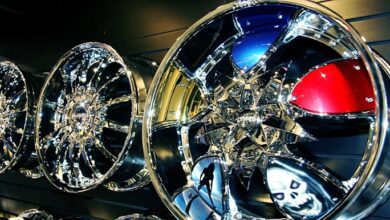
ATPerhaps, from the experience of the driver, you wondered which pair of tires in the best condition should be installed on the rear, and possibly on the front axle of the car. I can assure you, you are not alone! I have received many questions about this. So I prepared something demonstrative and explanatory.
Axle, drive and installation of the best tires
Previously, when tube tires were used, everyone thought and believed that the front axle is the place to install the best rubber. By this, as it was believed, we could protect ourselves from a breakdown and a sharp departure from the lane when a tire was punctured. But the current tubeless tubes are much more reliable, and if they break through, the air will leave them at a completely different speed.
When rear-wheel drive cars became prevalent in the shops, opinion changed, and it was assumed that the best pair of tires was mounted on the drive axle, in this case the rear axle. So the theory was developed that the best tires should always be mounted on the rear axle.
Over the years, this has changed, because in any way today is the day of the front-wheel drive car.
Four separate organizations conducted independent tests to show which axle makes the most sense to fit the best tires.
What is the best axle to put tires on?
The test used 4 brand new tires. In the 1st and 2nd combinations, tires of the same brand, of the same production period, differing in tread depth by no more than 1.5 mm, were tested. In the tests, the situation of buying two tires was simulated, and a year later, buying two identical tires in a set. In the test, the best tires were fitted first to the rear axle and then to the front axle.

In the third and fourth combinations, tires of excellent brands were tested, different in terms of release date, as well as a difference in tread depth, but not more than 3 mm. As in previous situations, tires of better quality and performance were first mounted on the rear axle and then on the front axle.
During the test, the following characteristics were compared:
- Aquaplaning.
- Wet braking with ABS.
- Circular driving on a wet road.
- Handling on wet roads without ESP.
- Wet handling with ESP.
- Changing lanes on a wet road.
- ABS braking on dry pavement.
Dry residue test results
Also don't forget to regularly swap tires between axles every 10,000 km to keep all tires in the same condition and avoid uneven tire wear (only when 4 identical tires were the starting point).
Conclusions on the effectiveness of the test:
- Aquaplaning - BEST FRONT TIRES
- Wet braking with ABS - THE BEST TIRE ON THE FRONT AXLE
- Wet Cornering - BEST FRONT TIRES
- Wet steering without ESP - BEST REAR AXLE TIRES
- Wet handling with ESP - BEST REAR AXLE with big tire difference / BEST FRONT AXLE with little tire difference
- Wet lane change without ESP - BEST REAR AXLE TIRES
- Dry braking with ABS - THE BEST TIRES ON THE FRONT AXLE (the difference in results is small).
Maybe when you are driving, the front end is better, and if you are going “fast but safe” (i.e. you are going, shuffling and overtaking on a turn), is it better to put it on the back?
Eh, this is another case that shows that there is nothing black or white in the world. You can never say - do it, because it's better that way. There is always a but. But here is the testing itself, in English, but still understandable.




As far as I remember it's like this:
Front wheel drive - better forward
Rear-wheel drive - it's better to have 4 good ones, but here there are two options. Either it’s better to go to the back, because they are leading, so they will pull you out of a snowdrift, etc., or it’s better to go to the front, because they are brakes. Oversteer is easier to fix than understeer.
My front ones are usually better, because the rear ones wear out quickly on the rear wheel drive.
If you drive on 4, then you know that all 4 should be normal.
What if the best rear tires pulled you out of a snowdrift, if the top front tires left you there forever in the blink of an eye? Who knows? In a word, it’s better not to get stuck in a snowdrift than to wonder if good tires will pull you out of it. It's the same with starting and braking - it's better to have trouble starting but braking effectively than the other way around.
And this is despite the experts, says a man who has worked in the tire industry for several years and participated in various tire tests several times ...
I bought two new sets of tires (summer/winter) and after each season there is a difference in front/rear wear with front wheel drive. Every time I put the best ones in front, because if the fronts wear more during the season, it means they work harder and are simply more important. Such a conclusion according to peasant logic. Only the front is chasing the back each season. The car is a Golf IV with a diesel engine, ie. compact, with a heavy engine in the front and a light engine in the rear, which of course doesn't matter.
I don’t know, on the one hand, there are tests and there is folk wisdom, on the other hand. I would probably prefer to reduce the risk to the passengers as the front wheels decide where the car goes and put better tires on the front axle.
If we were talking about a good drive (track), I would also prefer the best front end - drive more confidently, being able to press the brakes hard, than be afraid to slow down, but be able to get out of a bad situation to the fullest.